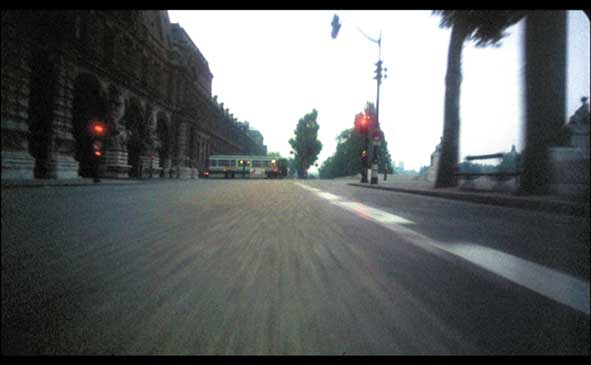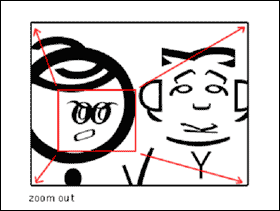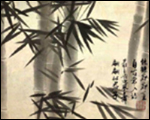Arist Monica Bonvicini will participate in a panel discussion at Art Forum Berlin, the giant art fair, next week. Her co-panelists: gallerist Joe Amrhein, and collectors Harald Falckenberg and Mera & Don Rubell. The moderator is Marc Spiegler, an srt writer who made this sort of trouble at Basel, too.
The Topic: “Bigger! Faster! Out of control! Does today’s Art Market devour Artists?”
From the description: “Since the early 1990s, the art market has been rocked by change. There are many more collectors today, buying more aggressively. The role of the gallery is being radically transformed (and even threatened) by the surging number of fairs, biennials and contemporary auctions. Artists are treated like popstars and their audience often suffers from Neophilia, a constant craving for the new…Is this a permanent transformation or just a ‘Live Fast, Die Young’ phenomenon, dooming us for a crash and destined to yield only ephemeral art?”
Be sure to bring a pen (to jot down the names of hot new artists) and your checkook. Art Forum Berlin, 9/21 @ 1730 (that’s 5:30 to you, pal)
Author: greg
Aaron Eckhart IS Samson IN The Grizzly Adams Production OF
The Bible’s Greatest Miracles. Yes, before he donned a wig in Erin Brockovich, but after his breakout performances in Neil Labute’s In The Company of Men and Your Friends and Neighbors (and a supporting role in Oliver Stone’s Any Given Sunday), Aaron Eckhart, sporting a wig that must have required a lot of faith, played an almost Stoppardian Samson in this 1999 made-for-PaxTV documentary.
I remember stopping dead in my channel surfing tracks when I saw my former BYU classmate, New York neighbor and fellow parishioner, and ex-boyfriend of my good friend, doing an Old Testament John Wayne on what looked like the Egyptian set of Dr. Who. My kingdom for a video capture.
But don’t just take my word for the power of this film. Grizzly Adams witnesses best:
History’s most spectacular miracles and claims. . .but are they true? Bible scholars and skeptics examine four of the Bible’s greatest mysteries–David and Goliath; Moses receiving the Ten Commandments on Mt. Sinai; Shadrach, Meshach, and Abednego in the fiery furnace; and the story of strongman Samson and Delilah–to determine if they are myth or reality. Watch dramatic re-creations of Bible events, expert testimony, and conclusive scientific experiments that put these Bible stories to the test. See compelling new evidence that the Bible is indeed factual and trustworthy!
Bonus: the script was written by David Balsiger, who just wow’ed em in Dallas.
Buy The Bible’s Greatest Miracles on DVD, direct from Grizzly Adams Productions, for $19.95.
And That’s How Grizzly Adams Got His G-Class
What’s with all the film festivals this time of year (Venice, Telluride, Toronto, NY, American Film Renaissance)? If you haven’t heard of that last one, [Their slogan: “Doing films the right way”] for heaven’s sake don’t tell anyone; they’ll know you’re not one of them.
AFR is a conservative film festival full of true believers; Bryan Curtis, who must’ve drawn the short festival coverage straw over at Slate, does a bangup job of unpacking the messages of this obscure, oppressed, voiceless underclass.
After laughing endlessly at cruel Michael Moore fat jokes, Curtis reports how the crowd grew uneasy and confused at David Balsiger’s screening. The head of Grizzly Adams productions, Balsiger greenlighted his company’s latest film, on George Bush’s faith, after commissioning Gallup polls on what’s hot with big swaths of Middle America. Yay, Capitalism? Wha? You’d think these people hadn’t seen Austin Powers.
Sundance for Republicans [Bryan Curtis, Slate]
American Film Renaissance [what, no invocation?]
Grizzly Adams film and television
C’Etait Un Rendezvous: a pure Parisian chase movie

And I thought Ronin had the most jaw-dropping Parisian car chase scene.
In August 1976, French director Claude Lelouch (who, it turns out, did the French segment of 11″09’01, the one where the deaf chick decides to break up with her boyfriend at 9:59 or something) had 9 minutes of film, a Ferrari 275 GTB, a gyro-stabilized camera and mount, and an idea.
He set a route through the center of Paris, from Porte Dauphine, through the Louvre and up to the Basilica of Sacre Coeur, strapped the camera on the bumper, and drove flat out through the (somewhat empty) early morning streets.
Rendezvous is the one-take artifact of that insane and illegal trip. Not technically a chase scene, maybe it should be called a race scene. It’s the verite equivalent of the Hollywood-staged Sunset Blvd race in Against All Odds, and it ranks with the likes of Peter Yates’ Bullitt and Friedkin’s The French Connection for best car chase scenes ever.
With one difference: the obvious danger to bystanders during Rendezvous throws peoples’ moral compasses out of whack. Some, like neonrebel, get all hot for the film, then suddenly turn all critical and judgmental, like a self-hating preacher after scoring a hooker. Others, like a writer for The Daily Express, show amazing lack of judgment when he calls the film “an automotive equivalent of September 11th footage.”
Now you, too, can hate yourself in the morning; after decades underground, C’Etait Un Rendezvous is now available on DVD.
Buy Spirit Level Film’s release of Rendezvous for $28.95 from Chasecam. Read neonrebel’s review. [via the Sachs Report? Why didn’t you tell me about him before?]
[9/17 update: Lelouch has performed another stunt this week, offering free nationwide screenings for his latest film, Les Parisiens, which got panned by critics.]
Bloghdad.com/Gunner_Palace
Tony Scott’s first report from Toronto really gives you a feel for the festival’s sprawl and cinematic frenzy, where you feel like you’re missing movies more than watching them. Meanwhile, he only mentions one film, and he mentions the hell out of it: Gunner Palace, Mike Tucker and Petra Epperlein’s documentary about US soldiers’ lives in Baghad. Here’s a taste:
Gunner Palace is so startling because it suggests – it shows – just how complicated the reality of this war has been. It may not change your mind, but it will certainly deepen your perception and challenge your assumptions, whatever they may be. I hope “Gunner Palace” makes its way quickly from this festival to American theaters, because it is not a movie anyone should miss.
Sure, but did you like it?
Sex, War, and Hype at Toronto Festival of Films [A.O. Scott, NYT]
See a trailer and clips at GunnerPalace.com
Manohla Dargis: It’s Armenian for ‘driven crazy by jabbering’
So Tony Scott and Manohla Dargis, his new partner in film reviewing, handicap the fall movie season in today’s NYT. Now about the new kid: she praises David O. Russell and Alexander Payne in the same sentence, so she can’t be entirely, irredeemably, Joyce Wadler-style crazy, but the only possible explanation I can come up with is it’s a cry for help:
Even if Before Sunset doesn’t make huge sacks of money, it will probably be one of the best if not the best film [Warner Brothers] puts out this year. It’s too small to get Oscar recognition, because those dolts in the academy rarely look at a movie that tiny, but big Warners has to understand that this movie has great worth.
Before Sunset just about drove me INSANE. Those two jabbery narcissists deserved each other; the Ethan Hawke character’s invisible wife must plop into a Calgon bath as soon as he walks out the door for his book tour.
Did someone mention walking? I haven’t seen such a pointless randonnee since Gerry. But with its incessant, empty banter, Before Sunset is almost the exact opposite of Van Sant’s nearly dialogue-free buddy pic. Before Sunset is the anti-Gerry. And you’ve gotta pick your poison; you’re either a Gerry person or a Before Sunset person. Unless you’re Manohla Dargis, who apparently loved both. Move over, Joyce.
The Best Movies We’ve Never Seen [NYT A&L]
Related: greg.org on Gerry
Time Lapsing at the WTC Site
Jim Whitaker is the director of a documentary in the making of the changes taking place at the World Trade Center site. Project Rebirth, as it’s called, has been taking time lapse imagery from various cameras perched on buildings surrounding the site since the Spring of 2002, after most debris was cleared away from The Bathtub.
Now, in time for the third anniversary of the attacks, they’ve released a trailer, some time lapse segments, and a webcam. Begun with an imperative to capture History and only a bare conception of what it might actually look like, the filmmakers added street-level and firehouse cameras later on.
Which is interesting, because by definition, human presence, the individual, is rendered invisible in a multi-year time lapse. Like Hiroshi Sugimoto’s movie screen photographs, which are exposed for the duration of a film. Technically, the resulting image “contains” all the information in the film, but the screen itself is pure white. Meanwhile, the minutest details of the theaters–architecture, seats, stages, curtains–emerge from the darkness only because of the projected film.
projectrebirth.org
Ground Zero, The Long View [Sarah Boxer, NYT]
Time Lapsing at the WTC Site
Jim Whitaker is the director of a documentary in the making of the changes taking place at the World Trade Center site. Project Rebirth, as it’s called, has been taking time lapse imagery from various cameras perched on buildings surrounding the site since the Spring of 2002, after most debris was cleared away from The Bathtub.
Now, in time for the third anniversary of the attacks, they’ve released a trailer, some time lapse segments, and a webcam. Begun with an imperative to capture History and only a bare conception of what it might actually look like, the filmmakers added street-level and firehouse cameras later on.
Which is interesting, because by definition, human presence, the individual, is rendered invisible in a multi-year time lapse. Like Hiroshi Sugimoto’s movie screen photographs, which are exposed for the duration of a film. Technically, the resulting image “contains” all the information in the film, but the screen itself is pure white. Meanwhile, the minutest details of the theaters–architecture, seats, stages, curtains–emerge from the darkness only because of the projected film.
projectrebirth.org
Ground Zero, The Long View [Sarah Boxer, NYT]
Now Playing at Les Arenes de Chaillot
The Guardian’s Jon Henley talks with members of La Mexicaine de Perforation, the urban explorers group who built and operated a cinema in a 4,000-sf uncharted quarry 60 feet under the Place de Chaillot in Paris. They called the cinema Les Arenes de Chaillot.
During the seven-week season, the Mexicans screened films by “Chinese and Korean directors but also Alex Proyas’ Dark City, Coppola’s Rumble Fish, David Lynch’s Eraserhead, and Terry Gilliam’s Brazil.
Clandestine group reveals how it built its cinema beneath the city [Guardian UK]
Now Playing at Les Arenes de Chaillot
The Guardian’s Jon Henley talks with members of La Mexicaine de Perforation, the urban explorers group who built and operated a cinema in a 4,000-sf uncharted quarry 60 feet under the Place de Chaillot in Paris. They called the cinema Les Arenes de Chaillot.
During the seven-week season, the Mexicans screened films by “Chinese and Korean directors but also Alex Proyas’ Dark City, Coppola’s Rumble Fish, David Lynch’s Eraserhead, and Terry Gilliam’s Brazil.
Clandestine group reveals how it built its cinema beneath the city [Guardian UK]
Like Watching Wallpaper Dry
Wallpaper* founding editor Tyler Brule will host and produce The Desk, BBC4’s “long awaited media show,” a media-gazing TV gig even more prestigious than, say, Topic A with Tina Brown.
Brule’s strategy for getting the slot may give a hint of what to come; according to the Guardian, Brule first had to beat off some stiff challengers, and “he also beat off other more experienced media experts including Loaded founder James Wheeler, author Paul Morley and Newsnight’s Kirsty Wark.”
Apparently, so many people wanted to try their hand at the low-paying job because it’s been a stepping stone for careers in television. I was going to try to squeeze a couple more jokes out of this, but I think I’ll stop here.
Wallpaper man wraps up BBC media role [Media Guardian, via mediabistro]
It takes a village planner, Brule’s imaginary neighborhood shop-a-thon for NYT’s T
Like Watching Wallpaper Dry
Wallpaper* founding editor Tyler Brule will host and produce The Desk, BBC4’s “long awaited media show,” a media-gazing TV gig even more prestigious than, say, Topic A with Tina Brown.
Brule’s strategy for getting the slot may give a hint of what to come; according to the Guardian, Brule first had to beat off some stiff challengers, and “he also beat off other more experienced media experts including Loaded founder James Wheeler, author Paul Morley and Newsnight’s Kirsty Wark.”
Apparently, so many people wanted to try their hand at the low-paying job because it’s been a stepping stone for careers in television. I was going to try to squeeze a couple more jokes out of this, but I think I’ll stop here.
Wallpaper man wraps up BBC media role [Media Guardian, via mediabistro]
It takes a village planner, Brule’s imaginary neighborhood shop-a-thon for NYT’s T
2004-09-13, This Week in The New Yorker
![]()
Issue of 2004-09-13
Posted 2004-09-06
THE TALK OF THE TOWN
COMMENT/ IN MODERATION/ Hendrik Hertzberg compares the face of the Republican Party to its platform.
DEPT. OF DISCOURSE/ CIVIL DISOBEDIENCE/ Ben McGrath roams the Republican Convention.
GIVERS/ MONEY HONEYS/ Lillian Ross rubs elbows with the rhinestone Republicans.
ON THE AIR/ YOUNG AMERICANS/ Dana Goodyear on a group of preteen pundits.
CAMPAIGN JOURNAL/ Philip Gourevitch/ Bushspeak/ How the President works the crowds.
SHOUTS & MURMURS/ Paul Rudnick/ Running Mates
PROFILES/ David Remnick/ The Wilderness Campaign/ Al Gore, four years later.
FICTION/ Marilynne Robinson/ “Kansas”
THE CRITICS
BOOKS/ Thomas Mallon/ Golden Boy/ The life and letters of Truman Capote.
A CRITIC AT LARGE/ Adam Gopnik/ Will Power/ Why Shakespeare remains the necessary poet.
THE SKY LINE/ Paul Goldberger/ Homes of the Stars/ A high-profile suburb for the Hamptons.
THE CURRENT CINEMA/ David Denby/ Journeys
Vincent Gallo’s new movie, and an F. W. Murnau retrospective.
FROM THE ARCHIVE
OUR FAR-FLUNG CORRESPONDENTS/ Truman Capote/ A Ride Through Spain/ Capote’s first piece for the magazine/ Issue of 1950-09-02
ONLINE ONLY/ An interview with Paul Goldberger.
ONLINE ONLY: Q & A/ A Writer’s Time/ Marilynne Robinson discusses her first piece of fiction in two decades.
Animated Typography: Not My Type IV, by The Lycette Bros.
 Also worth checking out from Strange Attractors is Mark & John Lycette’s Not My Type IV. Although it dates from 2002, it’s just started getting attention and awards from festivals this year.
Also worth checking out from Strange Attractors is Mark & John Lycette’s Not My Type IV. Although it dates from 2002, it’s just started getting attention and awards from festivals this year.
The Lycettes’ Not My Type series uses typographic elements to create pared down characters and landscapes. A comma becomes a teardrop falling from o-within-O eyes, for example. Very smart, not cheesy stuff; it’s the best animated typography since Donald visited Mathmagicland.
That said, the pacing drags a little; when the protagonist gets annoyed at the whining leafblower, you feel something stronger than just empathy. Very nice stuff that makes me want to see I-III.
Not My Type IV by the Lycette Brothers [Strange Attractors, ABC]
Lycette Bros. studio site
Developing a Storyboard [Note: that untraceable typewriter sound is coming from an embedded Flash image waayy down the page that looks just like the jpgs around it. Flash is the new midi, apparently.]
The Way by Qing Huang, and 11 other AU animations
 Strange Attractors is a showcase of short films by 12 Victoria (Australia) animation artists sponsored by the Australian Broadcasting Corp. It looks very promising, in that “utter absence of commercial pressure=trippier than normal animation” kind of way.
Strange Attractors is a showcase of short films by 12 Victoria (Australia) animation artists sponsored by the Australian Broadcasting Corp. It looks very promising, in that “utter absence of commercial pressure=trippier than normal animation” kind of way.
Surfing through the offerings, bios and highly particular technical/instructional articles, the first film I decided to watch was Qing Huang’s The Way.
The Way is a beautiful 3-d cgi transformation of traditional Chinese painting that explores the Taoist’s view of art and nature. Although it’s all done in Maya, not actual stop action animation, it reminds me of the best aspects of William Kentridge’s work (i.e., the unification of technique and aesthetic, drawing/erasing and brushstroke, not the heavy-handed political melodrama.)
Watch it before reading Qing’s meticulously conceived philosophical approach to the project, if only to realize how, unlike so many of Kentrige’s works, the Big Message doesn’t overwhelm the film’s expert, enjoyable lyricism.
Strange Attractor [lo-band entry, easier than flash, via MeFi]
Painterly Effects in Maya, by Qing Huang [Strange Attractor, ABC]
